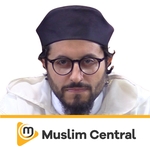Shadee Elmasry – 9 Differed Upon Matters That You Shouldn’t Worry About

AI: Summary ©
The speaker discusses the importance of not worrying about deferred matters during prayer, as they are subtle differences between different schools of Islamic law. They also explain the concept of "med component" and how it relates to praying. The speaker emphasizes that praying is not something that should be a distraction from reality.
AI: Summary ©
Let's talk about some deferred upon matters. And this is
something that oftentimes takes up more
space in your head than really necessary. For example, I'm going
to list a few things that you should never worry about in the
prayer because they're all valid differences of opinion. The first
one is that you may see many Muslims raising their hands up
before
ruku balance, and after coming back from bowing. And this exists
in one of the schools of thought you should know that there are
four schools of Islamic law, meaning the living traditions have
passed down knowledge from the time of the prophet to the
companions to the next generation to the next generation all the way
until today. Okay, there are four living schools of thought. And
they are called the Hanafi, madaket, Chef, and humbly schools
of thought, and they have some differences amongst them. Now, why
are we talking about this, because the prayer is very visible, you're
going to go to masajid. And you will see people praying in
different ways. And in this portion of the video wants you to
know that these are not significant differences. And these
are not something that should take up a lot of space in your mind.
Amongst them is what we just said, of raising the hands, how to raise
your hand to begin, the prayer can also differ, we're not going to go
into the difference, I'm just going to let you know that there
are subtle differences, where to place the hands in the prayer, how
to move the finger when you sit down for the Tisha hood and the to
hear how to sit and when you do so how far to turn your head when you
sit them out of the prayer. Okay, so these things are subtle
differences that a new Muslim will see and youth will look in the
massage and and see there's so many different ways to pray, what
is this, you have to know that the forms these are these are the
details of the form. And it's not something that you should worry
about. So that's really all I have to say about that is just to give
you the idea that the finger where to hold the hands, how to hold the
hands, okay?
How, when to raise the hands, how to sit down, how far to turn your
neck when you give the test, leam, et cetera, et cetera, are all
things that you will see in the mosques. And you don't have to
really worry about especially at this point when a person is just
learning how to pray.